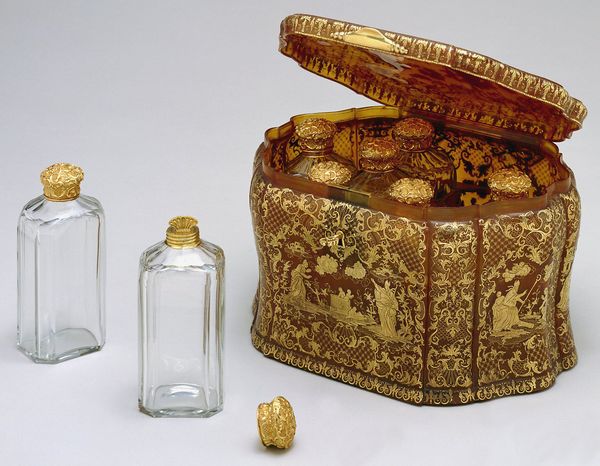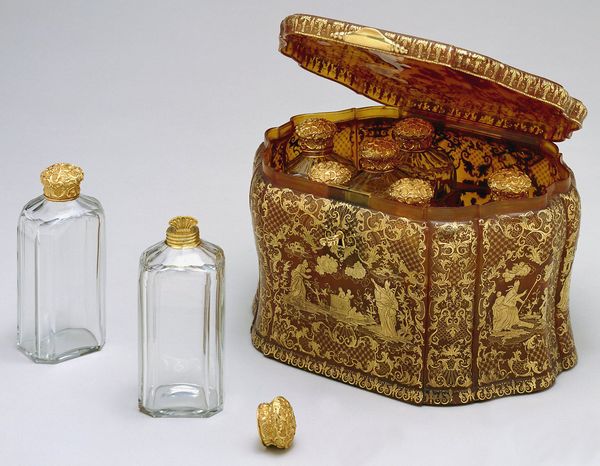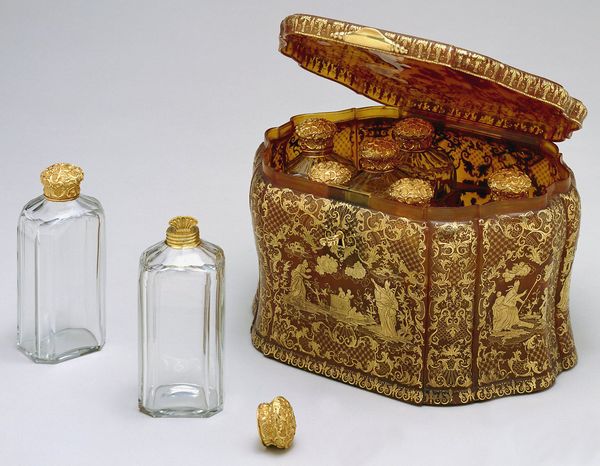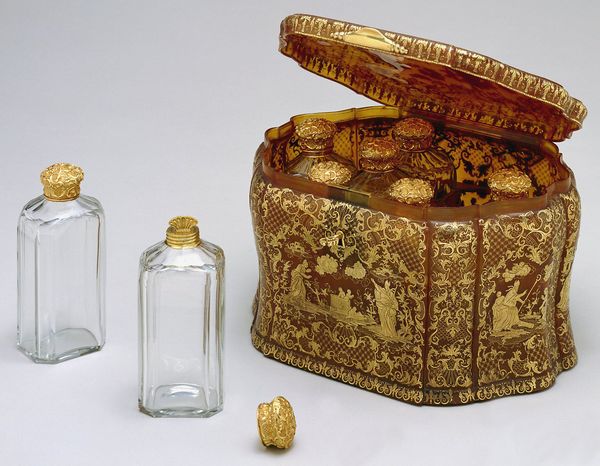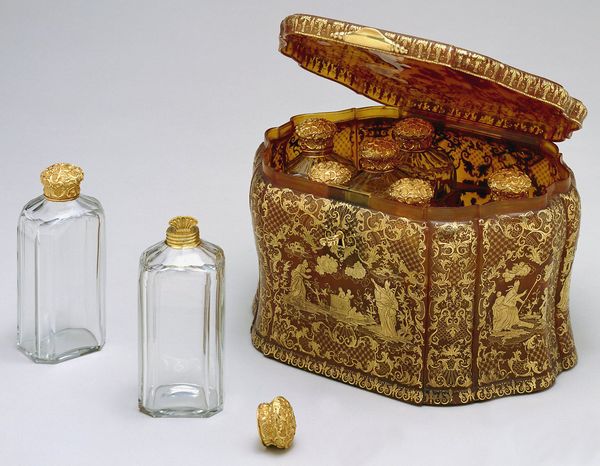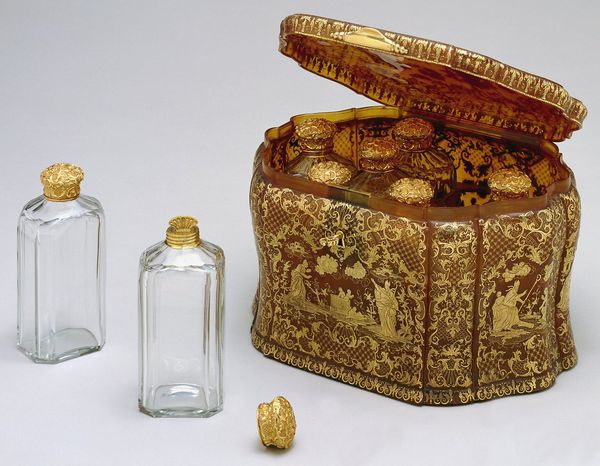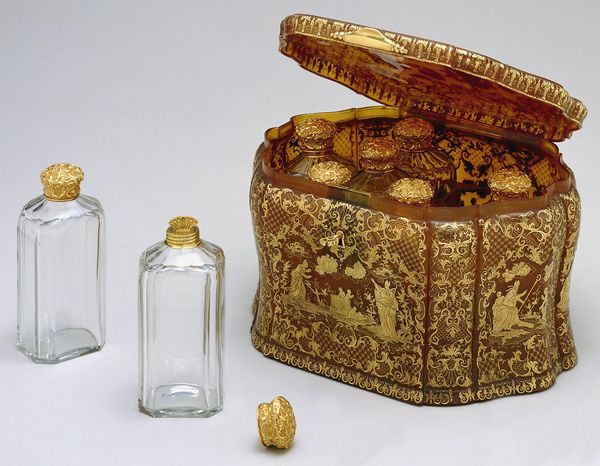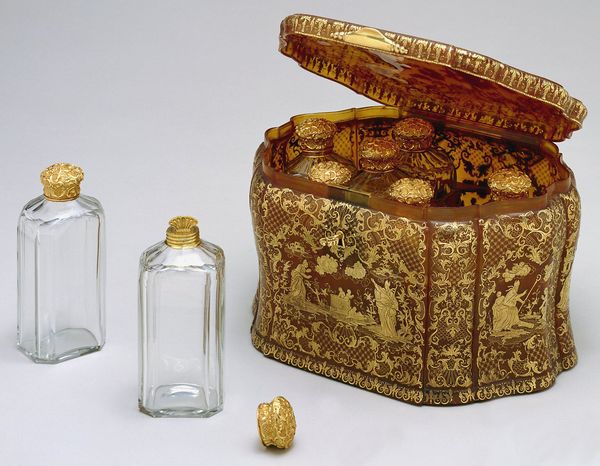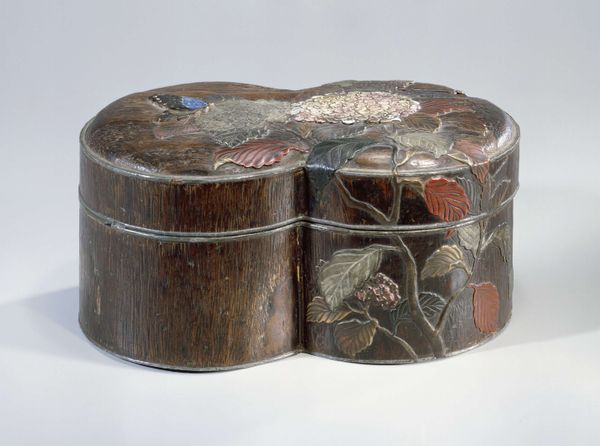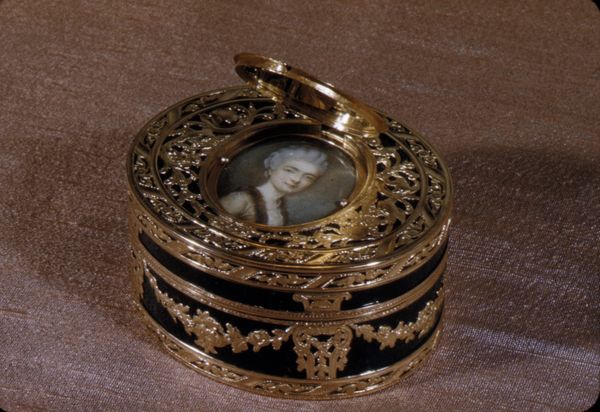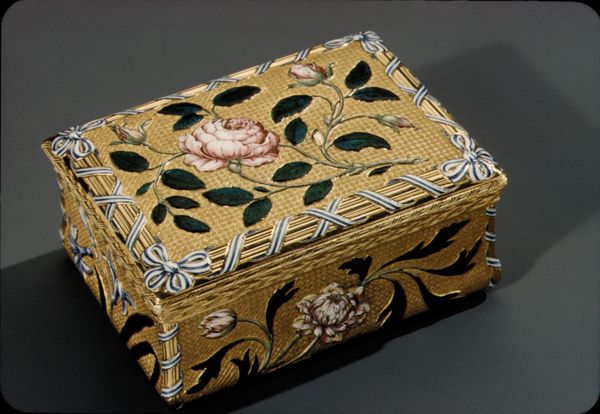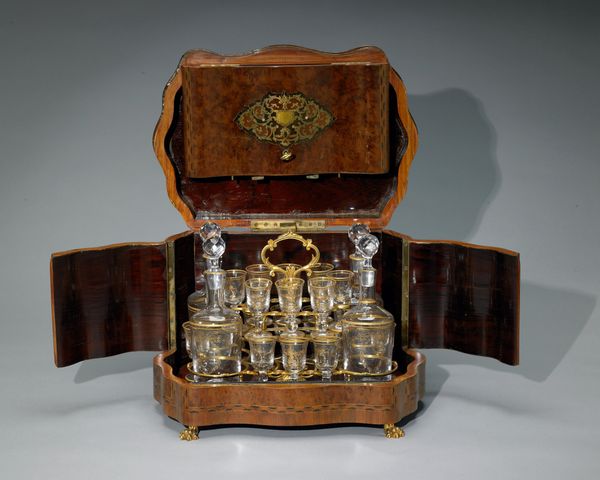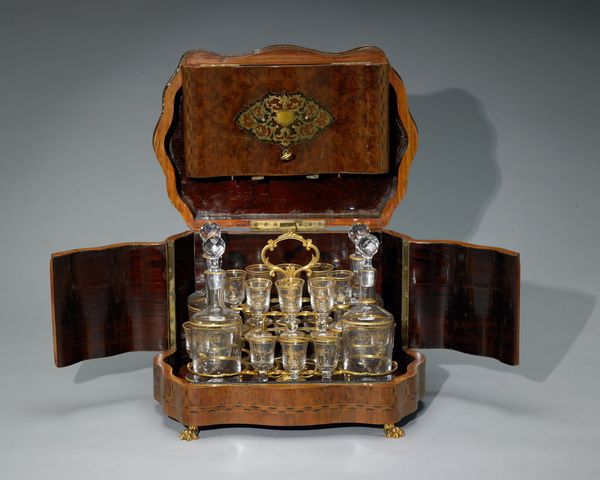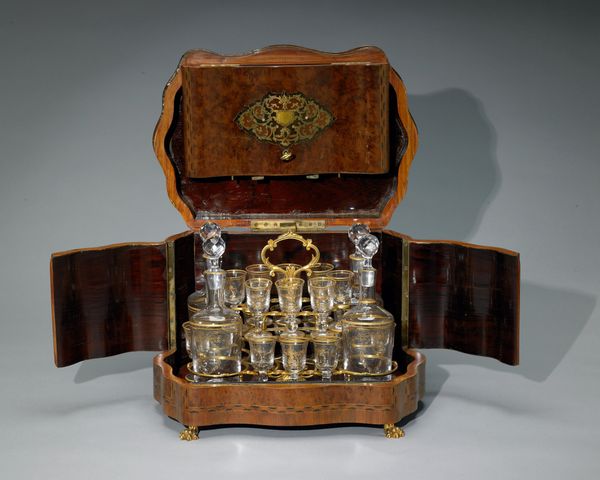
ceramic, guilding, glass
#
baroque
#
ceramic
#
guilding
#
glass
#
ceramic
#
decorative-art
Copyright: Public Domain
Editor: Here we have a glass bottle and its decorative box, made around 1745. What strikes me is the elaborate guilding all over the box, yet the bottles are plain, spare glass. What do you make of this piece? Curator: This contrast is quite telling. In the Baroque era, such intricate detail wasn't just about aesthetics; it spoke volumes about power and social standing. Who do you imagine owned such an object? Editor: Well, given the gold leaf, probably someone wealthy? Perhaps nobility? Curator: Precisely. And think about what’s inside those bottles: perfume, perhaps medicine. Luxury goods were highly gendered, connected especially to women. How do you see that connection manifesting here? This connects to colonial histories as well... Where do you think they got those materials for glass-making, and even the perfumes from? Editor: Ah, I see... The elaborate container is almost like a performance of wealth and access, then? It almost feels like it's shouting while the bottles are muted... Curator: Exactly! The exterior performs a specific social role tied to the user’s identity and status in the colonial structure, while the clear bottles highlight the preciousness and purity of the imported materials within. It reveals that everyday objects held a significant place in understanding class and gender constructs. Editor: That's fascinating. I had just seen a fancy container at first glance! Now I see all the layers, revealing much deeper meaning related to the user and even global trade during that time. Curator: And that is how objects invite critical discourse!
Comments
minneapolisinstituteofart over 1 year ago
⋮
The box is decorated with scenes from the life of St. Nicholas of Myra. This fourth century Greek bishop, who was the patron saint of children, sailors and travelers and the guardian of young women, was the forerunner of St. Nicholas or Father Christmas. The gold scenes were applied in a piqué technique whereby thin sheets of gold are impressed into tortoiseshell which has been softened in boiling water and olive oil. Once the shell cools, it contracts and the gold is securely held in place. This technique was first introduced at the end of the sixteenth century in Naples, and by the following century it had spread to France, England and northern Europe, with Paris and Naples as the principal centers. The costly and time-consuming nature of this intricate technique imply that it was used on only the most expensive small luxury items such as inkstands, trays, snuffboxes and boxes for toilet articles, in this case gold-mounted perfume bottles.
Join the conversation
Join millions of artists and users on Artera today and experience the ultimate creative platform.
